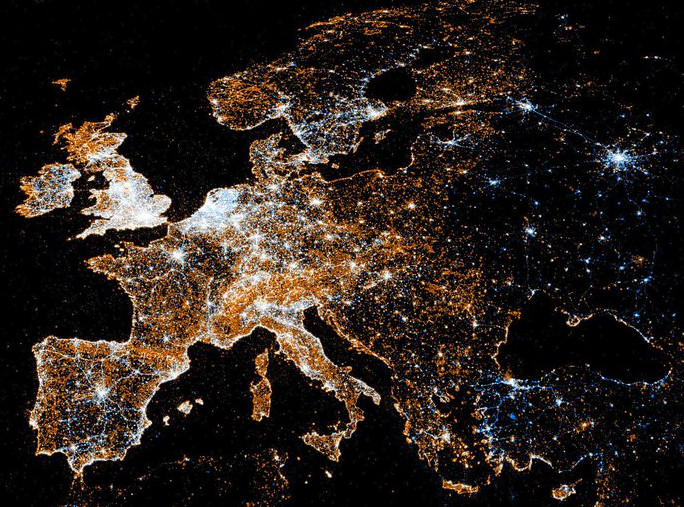Call For Abstracts: Glocality and Cosmopolitanism in European Crime Narratives
Call For Abstracts: Glocality and Cosmopolitanism in European Crime Narratives

Glocality and Cosmopolitanism in European Crime Narratives
Academic Quarter #22, 2020
Guest Editors:
Monica Dall’Asta (Bologna)
Natacha Levet (Limoges)
Federico Pagello (Bologna)
Deadline: January 15, 2020
Download the CFA
Since the fall of the Berlin Wall in 1989, the European crime narrative genre has represented the consequences of globalization in ways that have often involved the treatment of space and place. The new transnational configuration of the world’s geography — imposed by such powerful systemic factors as global trade, connective technologies, and the movement of large masses of people across different boundaries — has fueled a variegated debate over the notion of transculturalism. What has been called “the cosmopolitan turn” in the social and political sciences (Beck 2006) resonates in the research agendas of many contemporary approaches to European literature (Domínguez & d’Haen 2015), film (Eleftheriotis 2012; Mulvey, Rascaroli, Saldanha 2017) and television (Chalaby 2009; Bondebjerg 2016). This happens at a time of increased cooperation and integration among a variety of traditional and digital media, all allied to obtain, through seriality and transmediality, an augmented illusion of complex fictional worlds.
This issue of Academic Quarter aims at interrogating the ways in which current cultural experiences of glocalisation (Roudometof 2016), translocality (Greiner and Sakdapolrak 2013), transnational mobility and cosmopolitan networking have affected both place-specific production cultures and genre-specific representations of space and place in contemporary European crime novels, films and television series. We welcome proposals from different methodological perspectives that interrogate the intersection of local, national, regional and supranational agencies, cultures and identities in the creation of popular crime stories. Contributors should be aware of the post-Kantian, post-national/postcolonial frame (Mellino 2005) that forms the context for contemporary definitions of “critical cosmopolitanism” (Delanty 2006; Rumford 2008) and “critical transculturalism” (Kraidy 2005). At the same time, we welcome proposals focusing on the representation of Europe, European geography, European landscapes and European architecture.
A few general questions may be asked. Are we to conceive of cosmopolitanism and the process of European transculturation exclusively as unifying factors, fostering the generation of a shared and uniform transnational identity? Or should we better acknowledge the existence of a whole variety of European transcultural identities, expressed in different writing and audio-visual styles, characteristic narrative models, and place-specific production cultures? Should hybridization and transculturation be assumed as markers and powerful drivers of cultural homologation? Or rather, is the opposite true, namely that cultural hybridization entails a growing differentiation of narrative forms and styles, content and formats, thus contributing to the emergence of a post-national assemblage of multiple cosmopolitan identities?
Contributors must propose articles focusing on the post-1989 period in relation to topics involving a consideration of the treatment of space and place.
Possible topics include, but are not limited to, the following:
- Local thrillers in a glocal perspective
- Borders, borderlands, border-crossing and the migrant experience of space
- Crime narratives, tourism and location branding
- The consumption of foreign crime narratives as virtual journey
- Transcultural identities of European Noir: the Nordic and Mediterranean variants, and beyond
- Language, dialect, idiom and the sense of place
- Hybridity and cosmopolitan audio-visual styles
- Cosmopolitan authors and producers
- Production strategies and cosmopolitan networking
- The theme of locality in the promotion and packaging of crime novels, films, and TV dramas
- The hybridity dilemma: toward homogeneity or increased differentiation? The case of Netflix Europe.
- Situated characters: cosmopolitan habitus, traveling detectives and transcultural encounters
- Transnational crime networks and geospatial mapping
- Eco-thrillers and the destruction of the European environment
- Common-places of European geography: port cities, islands, mountains, inland areas
- Place and glocal minorities
- Gendering and/or queering space between the public and the private spheres
- Crime and architecture
- Space and time in the chronotopes of European Noir
Submission guidelines
Submission of abstract January 15, 2020
Submission of full article May 1, 2020
Submission of final/revised article October 1, 2020
Publication December 2020

Academic Quarter accepts two kinds of contributions: text articles or video essays. The submitted contribution will be sent to double blind peer-review.
A text article must be between 3,000-3,500 words (not including references), and must use Chicago Author-Date Style and the Chicago System Style Sheet.
Abstracts in app. 150 words in English must be submitted by January 15 2020 to Liza Pank (pank@cgs.aau.dk). The contributors will receive answer as soon as possible. Accepted articles must be sent to the guest editor no later than May 1, 2020. The final and revised article must be returned by October 1 2020, and the issue will be published December 2020.
Video essays
Video essays should be 7-12 minutes long and accompanied by an academic guiding text between 1,000-1,500 words. The video essay should be of scholarly quality and may be argumentative (documentary) or symbolic (metaphorical) or a combination. The guiding text should clearly explain the argument in the video-essay as well as the insight that the viewer may gain from watching it. Video essays should be final and handed in as a separate mp4-video-file. Academic Quarter supports only publication and not the technical development of video essays. Video essays and the guiding text will be reviewed together. Criteria for reviewing video-essays are a) the lucidity of the argument, b) the technical and stylistic execution of the video material and c) the clarity of the guiding text.
Contributions
Academic Quarter accepts two kinds of contributions: text articles or video essays. The submitted contribution will be sent to double blind peer-review.


